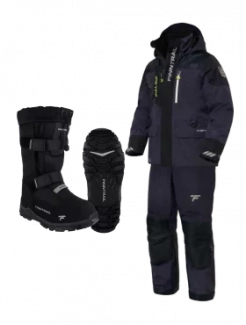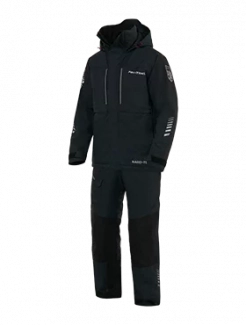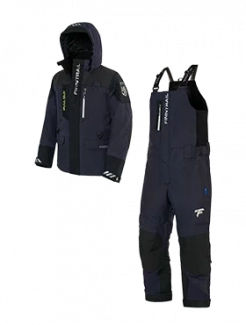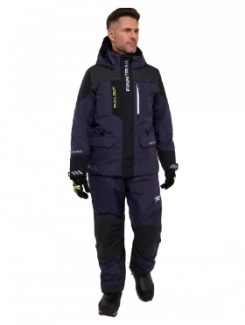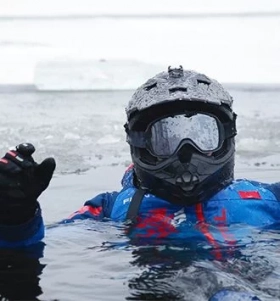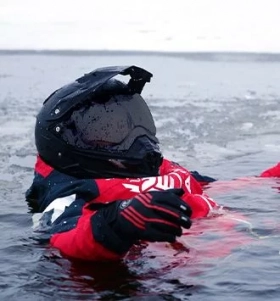How to Prevent and Treat Frostbite While Ice Fishing
Ice fishing is one of the most exciting winter traditions. Sitting on a frozen lake, waiting for a fish to bite, can be peaceful and thrilling at the same time. But every ice angler knows that with the beauty of winter comes one of the biggest dangers—frostbite.
Spending long hours in freezing temperatures makes your skin and extremities especially vulnerable. Fingers, toes, ears, and your nose are at the highest risk. That’s why it’s critical to know how to prevent and treat frostbite before heading out on the ice.
This guide will cover everything you need to know, from frostbite prevention strategies to practical steps for treating it if you or a buddy get caught in the cold.

What is Frostbite?
Frostbite is a cold-related injury that occurs when skin and underlying tissues freeze. This happens when the body loses heat faster than it can generate it, especially in areas with less blood circulation like hands and feet.
While ice fishing, conditions are perfect for frostbite to develop: sub-zero temperatures, exposure to wind, and long hours of sitting still. Even experienced anglers can underestimate how quickly skin damage can happen.
Common signs of frostbite include:
-
Numbness or tingling in the fingers, toes, nose, or ears
-
Pale or waxy-looking skin
-
Skin that feels hard or frozen
-
Later stages: blisters, swelling, and blackened skin
Recognizing these symptoms early makes all the difference between minor injury and permanent damage.
How to Prevent Frostbite While Ice Fishing
When it comes to frostbite, prevention is always better than treatment.
1. Wear Frostbite-Ready Ice Fishing Gear
Choosing the right ice fishing gear is essential. Start with:
-
Insulated boots to protect toes from cold surfaces
-
Waterproof gloves and mittens with liners for warmth
-
Thermal bibs and jackets made for ice anglers
-
Moisture-wicking base layers that keep sweat away from your skin
2. Protect Your Face and Ears
Your face is often the first place frostbite appears. Learning how to prevent it is key:
-
Wear a balaclava, ski mask, or neck gaiter to shield skin from wind.
-
Keep your ears covered at all times with insulated hats or hoods.
-
Apply petroleum jelly for extra protection. Vaseline helps prevent frostbite?”, it can help reduce windburn and moisture loss, but it should never replace proper face coverings.
3. Keep Your Body Moving
Sitting for too long makes your body temperature drop. Even when waiting for a bite, get up, stretch, walk around, or drill a new hole to keep your blood circulating.
4. Stay Dry at All Costs
Wet clothing is dangerous in freezing weather. Always pack extra gloves and socks in case your gear gets damp. Moisture speeds up heat loss and puts you at higher risk of frostbite.
5. Use Portable Heat Sources
Chemical hand warmers, heated socks, or boot insoles can provide warmth for hours. Slip them into gloves or boots to protect vulnerable areas like fingers and toes.
6. Limit Alcohol and Caffeine
Alcohol creates a false sense of warmth by dilating blood vessels, but it actually lowers core body temperature. Caffeine, found in coffee and energy drinks, may feel warming and boost alertness, but it can increase water loss and contribute to dehydration. Stick to water or warm drinks like tea and moderate coffee to stay hydrated without risk.
How to Treat Frostbite While Ice Fishing
Even with the best prevention, frostbite can still happen. Knowing how to treat frostbite immediately can prevent lasting damage.
Step 1: Get to Safety
Move to a heated shelter, vehicle, or indoors. Exposure makes frostbite worse, so the first step is removing yourself from the cold.
Step 2: Rewarm the Area Safely
-
Place the frostbitten area in warm (not hot) water, ideally between 99–102°F (37–39°C).
-
If water isn’t available, use body heat—for example, place frostbite fingers under your armpits.
Avoid using stoves, fires, or direct heat sources. Numb skin can’t sense temperature correctly, and burns can occur easily.
Step 3: Focus on Fingers and Toes
Treating frostbite fingers requires special care. Gently rewarm them in warm water and avoid rubbing, which can damage frozen tissue. If blisters form, do not pop them.
For toes, remove wet boots and socks immediately and replace them with dry, warm materials.
Step 4: Prevent Re-Freezing
One of the worst mistakes is rewarming the skin only to let it freeze again. If you can’t stay warm after thawing, it’s safer to delay rewarming until you reach shelter.
Step 5: Seek Medical Care
If frostbite is severe—skin turns black, hard, or you lose sensation completely—go to the hospital immediately. Advanced frostbite requires professional treatment, sometimes including medication or surgery.
Frostbite Prevention Gear and Hacks for Ice Anglers
When planning your trip, pack smart extras to lower your risk.
-
Layering strategy: start with moisture-wicking base layers, add insulation, and finish with a waterproof shell.
-
Buddy system: never ice fish alone. If frostbite or hypothermia strikes, having a friend can save your life.
-
Time management: take breaks indoors or in a heated shack instead of staying outside for hours straight.
Final Thoughts
Ice fishing is about enjoying the outdoors, catching fish, and making winter memories—not ending up with an injury. By knowing both how to prevent and treat frostbite, you can stay safe while still enjoying your time on the ice.
Investing in the right ice fishing gear, staying dry, keeping blood flowing, and reacting quickly to symptoms will keep you protected. So next time you head out onto the frozen lake, remember: prevention is the best cure, but preparation and knowledge are your real secret weapons against frostbite.

